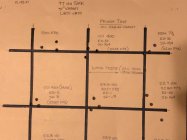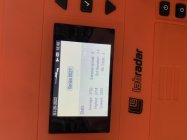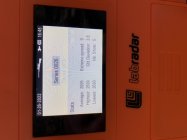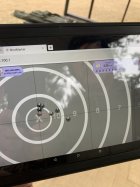Ned Ludd
Silver $$ Contributor
In my hands, the difference in terms of pressure/velocity between different primers was most noticeable with .223 Rem loads using H4895 and heavy bullets; less so with my .308 Win loads. I'm generally assume that the relatively small .223 Rem case has something to do with that, but that probably isn't the sole explanation. I've recently started doing a lot more primer testing with CCI BR4s and 450s in addition to the Fed 205s I've always used. In my hands, the Fed 205s still seem to routinely provide the lowest ES/SDs with tuned loads, both in .223 Rem and .308 Win loads. Maybe it's just my rifle setups along with the cartridge/powder/bullet weight combinations I use are better suited to the Fed primers, I can't really say for sure.I won't make any comments about the technical aspect of Brisance or hot ve cold but will make a comment based purely on my observation and I would love some feedback either way.
Simply because I have a decent supply of CCI 450 and CCI 41, I tried to see if I could start to alter my standard load that uses Federal 205MAR, in my 223 AI. That load is 25.5gr of Varget and a Hornady 88gr ELDM. The base load runs right at 2800 from a 28" Krieger as measured simultaneously with a magnetospeed and a lab radar. At 600yd the drop is pretty much spot on with the advertised G7 BC, so I have a decent amount of faith in the chrono numbers. Then on the "Test" load with the CCI 41, it shot up to 2920, and slammed the primer flat, whereas there are no pressure signs on the Federal "AR" primer. So that ended that test pretty fast. So from my observation I would conclude that the 41'a and 450's are indeed "Hotter".
That being said prior to lucking back into a little supply of varget, I really never noticed a difference on anothe albeit lighter load of 24.2 gr of Vit N140. Both types of primers shot pretty much the same and any deviations I saw I (maybe incorrectly) attributed to temperature changes.
Thoughts and comments welcome and appreciated
Thanks
The best news is that primers are a testable commodity, even if having a good supply of different primers can be a rather expensive prospect these days. Anyone can empirically determine for themselves which primer works best in their setup; i.e. which primer provides either the best absolute precision, or the best ES/SD values, or both, depending on the needs and intended use. As an F-Class shooter, I tend to look more closely at the ES/SD values due to the long strings of fire we shoot (20+ shots). I have not really observed that much of a difference in terms of precision between the different brands of primers, at least in that each could be tuned pretty much equally well with seating depth after settling on a defined charge weight. However, the ES/SDs with the Fed 205s has always been noticeably lower in my hands for reasons I can't explain with any certainty. The most important point is that in order to test different primers, you have to have the different primers to test. So it's probably a good idea to have at least a couple choices to try in the event one doesn't provide the results you're after. The downside of that is the extra cost involved, but as we all know, shooting sports can be a little pricey. Just another facet of the game, I guess.

















